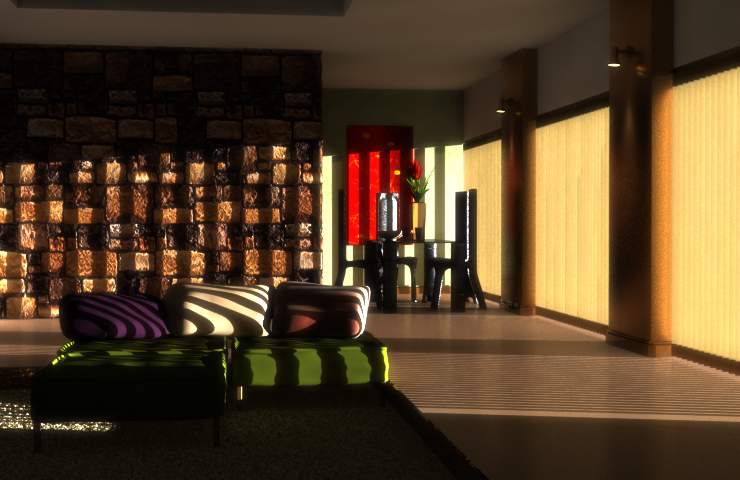Given that these days, most BIM authoring applications contain decent preview-quaility rendering systems, it's a good question to ask: why use a good renderer at all?
The answer is actually simple in concept, and only slightly more complex in detail: those built-in preview rendering systems don't give you realistic results at all, as most of them are incapable of calculating real lighting solutions, especially incident, coincident and reincident lighting, also known as Global Illumination or GI. In fact, of those inbuilt preview renderers fake a global lighting solution by adding an overall "lightening constant", and misleadingly calling it Global Illumination.
Why as a designer, or as a client should you care about this?
As light enters a space and intersects with surfaces, it is bounced around extensively - it's this light which hits your eye and conveys the scene to you. It does not bounce only once, and magically make for your eye (or the camera) rather it bounces around much the way a billard-ball does, but in all three axes. This means that surface colour and albedo have a significant impact on the lighting qualities of a space, both from the daylighting perspective where we care about sheer lumens, and also from the æsthetic perspective, where the colour and tone of light, the textures conveyed, the impact of specular twinkles, all have huge impacts on the perceived character of a space.
The two images you see directly below this were rendered with all settings precisely similar - in fact they differ in only one single parameter: the colour and albedo of the floor material.
The darker wood flooring reflects a little light, whereas the lighter composite floor reflects a lot of light; the darker wood flooring shifts the tone of the incident light towards the darker, tuscan reds, whereas the lighter composite shifts it towards buttery yellows and creamy whites.
Traditional renderers (hand rendered work) imitate these interactions somewhat, based on experience and training, but it's always an artistic impression, and so reflects what the artist believes you want to show, not what would actually occur. Preview renderers with their faux GI present an unrealisitic overall brightening but with no local-tone shift, no gradations or subtlety in their GI solutions.
Only good render systems which use real raytracing, IC and IBL to calculate lighting can produce these kinds of results.
Only good render systems which use real raytracing, IC and IBL to calculate lighting can produce these kinds of results.

For those who are curious:
This room is a generic preset which ships with modo, untextured, and almost unlit; I use it for materiality and lighting development and testing.
I added two IES lights, and textured it, and rendered these images with almost no post-work.
I added two IES lights, and textured it, and rendered these images with almost no post-work.
The upper render was produced to test a new ashlar wall material I've developed, and the lower render was done specificaly to illustrate the point of this post.



